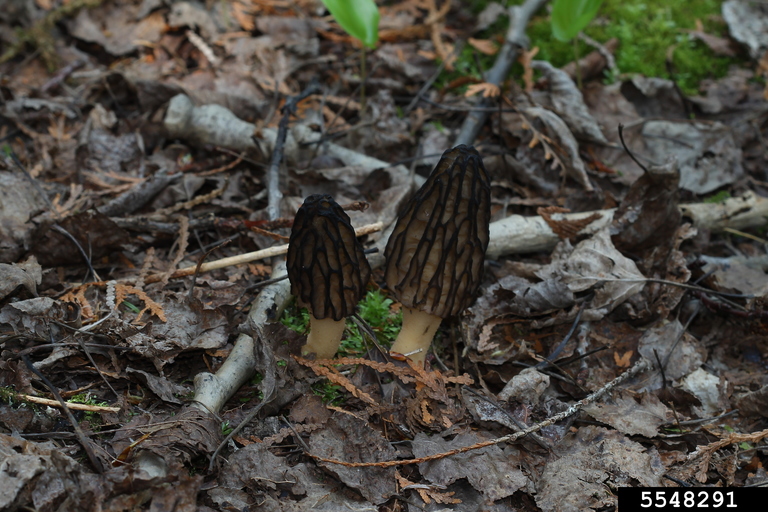Forestry

For those that think they don’t like mushrooms, it may be that they haven’t found the right one. Morel mushrooms (Morchella sp) are a sought-after species because of their delicate flavor and meaty texture. Morels are popular worldwide. However, commercial cultivation is limited because of their difficulty to grow in cultures like the mushrooms people may find on their favorite pizza. So, for those that want to find morels, they will have to put on their hiking boots and go in search of them.
Characteristics
Morels are characterized by their conic head and unmistakable honeycomb appearance. This appearance is because of a network of ridges and pits that run throughout the cap. They differ in color, chemical composition, and bioactivity, but morel hunters are most familiar with black and yellow morels. The black morel mushroom is often found in large groupings at the beginning of the season, often a week or so before the first sign of the yellow variety. Some avid mushroom gatherers believe that hill tops in the woods are among the best locations to find large patches of these delicious black mushrooms. The black morel is easily confused with the Gyromitra sp, a species that is also known as false morels. They are vaguely similar in shape, however, the Gyromitra sp have a wrinkled cap, not a pitted one like on the morel.
Hunting Morels
Morels can be difficult to find and the season for hunting morels is small. The morel mushroom season is dependent on weather trends, so successfully figuring out when morels are in season can often be as difficult as finding a patch of the tasty fungi. Morels usually start emerging around the first or second week of March and can be found until in mid to late March.
Morels can be found in a variety of settings. Lightly burned grassy areas, swampy ground, and areas that have been exposed to fire are all places that morels can be found. Old stream beds can also be a good place to find morels. Some morel gatherers believe there could be a relationship between dying trees and morels. Large patches of them can be found near dying or felled trees. This is often the case because the removal of the tree canopy allows light to hit the forest floor, which in turn warms the soil and makes conditions ideal for the growth of morels.
A favorite strategy employed by many morel hunters is to hunt the south and southwest sides of the hills early in the spring. These areas get more of the early spring sun that warms the ground to the perfect growing temperature, which produces the first morels of the season. As the days turn warmer, track the mushrooms deeper into the woods.
Morel hunting may not be as popular in the Southeast as it is in other areas of the country, but most morel hunters in Alabama are okay with that. It just means more for them. Want to join the hunt? Put on some boots, head to the woods, and see how many of these all-natural tasty treats you can find.
Confirm Identity Before Eating
Eating foraged mushrooms is a time-honored tradition. However, ensuring the mushroom is suitable for human consumption is crucial. Mycophobia is present in a lot of cultures, including some of those found in the Southeast. Learning to safely identify toxic mushrooms and rule them out will protect people from unknowingly consuming a harmful mushroom. When searching for morels, a good rule of thumb is to never eat a mushroom unless its identification is certain.
Featured image by Rob Routledge, Sault College, Bugwood.org

